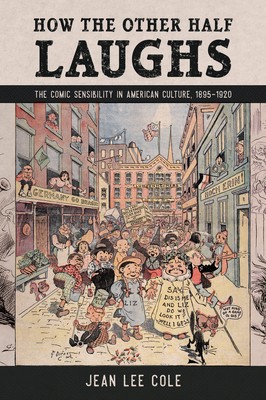
- We will send in 10–14 business days.
- Author: Jean Lee Cole
- Publisher: University Press of Mississippi
- ISBN-10: 1496826523
- ISBN-13: 9781496826527
- Format: 15.2 x 22.9 x 1.3 cm, kieti viršeliai
- Language: English
- SAVE -10% with code: EXTRA
Reviews
Description
Honorable Mention Recipient for the Charles Hatfield Book Prize Taking up the role of laughter in society, How the Other Half Laughs: The Comic Sensibility in American Culture, 1895-1920 examines an era in which the US population was becoming increasingly multiethnic and multiracial. Comic artists and writers, hoping to create works that would appeal to a diverse audience, had to formulate a method for making the "other half" laugh. In magazine fiction, vaudeville, and the comic strip, the oppressive conditions of the poor and the marginalized were portrayed unflinchingly, yet with a distinctly comic sensibility that grew out of caricature and ethnic humor. Author Jean Lee Cole analyzes Progressive Era popular culture, providing a critical angle to approach visual and literary humor about ethnicity--how avenues of comedy serve as expressions of solidarity, commiseration, and empowerment. Cole's argument centers on the comic sensibility, which she defines as a performative act that fosters feelings of solidarity and community among the marginalized. Cole stresses the connections between the worlds of art, journalism, and literature and the people who produced them--including George Herriman, R. F. Outcault, Rudolph Dirks, Jimmy Swinnerton, George Luks, and William Glackens--and traces the form's emergence in the pages of Joseph Pulitzer's New York World and William Randolph Hearst's Journal-American and how it influenced popular fiction, illustration, and art. How the Other Half Laughs restores the newspaper comic strip to its rightful place as a transformative element of American culture at the turn into the twentieth century.EXTRA 10 % discount with code: EXTRA
The promotion ends in 21d.03:08:07
The discount code is valid when purchasing from 10 €. Discounts do not stack.
- Author: Jean Lee Cole
- Publisher: University Press of Mississippi
- ISBN-10: 1496826523
- ISBN-13: 9781496826527
- Format: 15.2 x 22.9 x 1.3 cm, kieti viršeliai
- Language: English English


Reviews